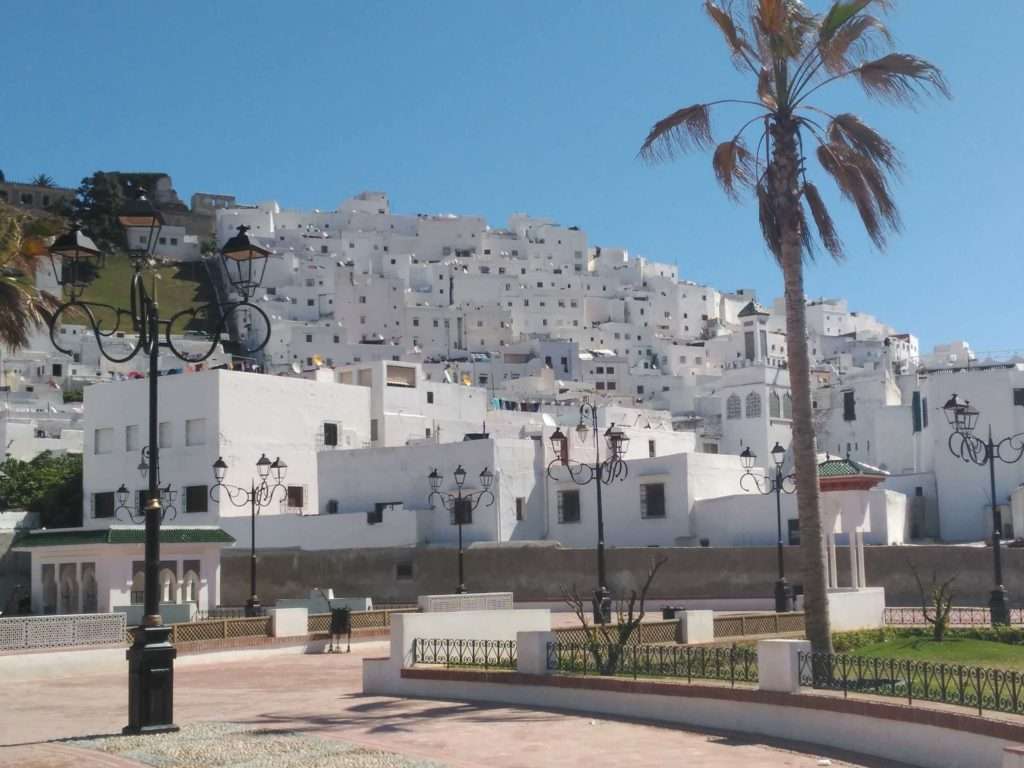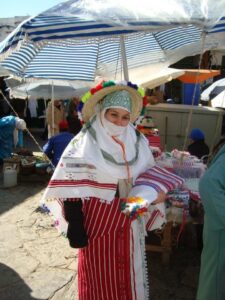

Medina Morocco
Medina means ancient city. All cities have a plaza or main streets in the center. From them arises the central landmark of the city, that is, it is from where the city begins to expand.
It turns out that due to the age of the buildings, cities grow and expand outside the walls, which determines the beginning or end of the city.
The walls of some cities in Morocco are a great tourist attraction. Within them was where each city originated, at that time, the walls served as protection against invaders and even its gates were closed at night. Many cities in Morocco retain their walls (or part of them) and are part of the cultural heritage of each place.
Currently when we cross these walls, we are entering the so-called Medina of the city (old city). There, we find numerous narrow streets (alleys) … in some cases we will need an accompanying guide.
One of the main medinas in Morocco is the city of Fez, which has more than 9,000 streets, and within it there are several neighborhoods. Is awesome.
The Medina is divided into neighborhoods, generally by profession or religion. Jews, for example, played an important role in the history of Morocco and lived very close to each other, which generated their own neighborhoods within it, they are called Mellah. In the Jewish quarter we see symbols of Jewish culture in buildings and old synagogues. Currently, the neighborhoods of the medina are divided by commercial area. It becomes evident when we begin to visit the neighborhoods of artisans, carpenters and canvas weavers. In them, we can see the workers who make crafts at the door of the premises, such as small wooden furniture, engravings on bronze trays, rugs, shoes (slippers), etc.
The tangle of streets, alleys and alleys, turns the medinas into a true labyrinth that sometimes turns a simple walk into a real puzzle.
Some medinas are small and easy to navigate, such as the Medina of Casablanca, which curiously, despite being the largest city in terms of population in Morocco, has a very small medina. The modernization and growth of Casablanca, betting on tall and modern buildings where the headquarters of various companies are located, has made the medina a beautiful little place to stroll and shop. The medina of the cities of Tangier, Assilah, Rabat, Chaouen and even Marrakech are easy to navigate. The larger medinas, such as the cities of Fez or Tetouan, are best visited with a local guide.
All cities have one and they are part of the tourist route, that is, where the traditional zoos and markets are located, within the Medina, which, in the case of a guided tour, you can be sure that the guide will take you.
WHICH THE BEST MEDINA TO VISIT IN THE NORTH OF MOROCCO?
Although the medinas show a certain visual disorganization, in reality they follow certain urban orders and established rules. But you will surely see a lot of people walking, bikes, wheelbarrows and even mules.
To walk in these medinas you must wear comfortable shoes and not women’s heels! The ideal is the usual tennis.
THE BEST MEDINA TO VISIT, if you have to choose, for example, in the famous 1-day tours that depart from southern Spain, the ideal option is the Medina of the city of Tetouan. However, if you have the opportunity to take a longer trip, be sure to visit the city of Fez. It is without a doubt the most emblematic visit you can make to a medina.
However, if you do not have much time and you are in the north of Morocco, be sure to visit Tetouan. I will explain why:
When we travel to Morocco, we look for authenticity, take a visit to discover the originality of the place. The city of Tetouan is the only one that preserves all this in a medina. It is a true journey through the time tunnel, where you can enjoy the women cooking authentic Moroccan food, buying vegetables in a very authentic environment.
For this reason, the Medina of Tetouan was named a World Heritage Site by UNESCO. As it is, as well as the Medina of Fez, one of the few medinas in Morocco that preserves its historical heritage.
The city was the seat of the Spanish protectorate in the years when Morocco was divided and administered by 2 countries: Fez, to the south, was administered by the French. And the northern region was in charge of Spain. Both the city and the Medina gained fame in the book The Time Between Seams. Such was the success that it became a television series that can currently be seen on Antena 3 .
The local School of Crafts also located in the medina of Tetouan and which turned 100 years old in 2021, is a point of reference throughout the country. There, the way of making objects with millenary techniques is preserved, passing from more experienced craftsmen to new generations of apprentices, preserving all the culture and making the city a great school of excellent professionals.
Stone mosaics that decorate tables and chairs, wooden doors carved with Andalusian designs, folding screens with rugs and small towels.

During the visit to the north of Morocco, we will see the typical clothing of the region. Women’s clothing changes, please confirm the region you are in the country. In Tetouan it is the typical clothing of the women of the RIF, El Rif is the name of the mountain range that passes between Tetouan and Chaouen.
The Hat is very typical there, they usually get it when they get married. The red and white suits are the ones that most represent this woman and are related to agriculture. In the Medinas we will see some women who travel from the mountain villages to sell products, fruits, vegetables and vegetables that she grows or manufactures in the villages.
WOODEN OVEN
The houses that are inside the medina do not usually have an oven, so traditionally each neighborhood has its own oven, where the women bring bread and sweets to bake.
MOSQUE
Also, during your visit you will see one or several mosques within the medina. Remember that in the Muslim religion devotees must pray 5 times a day. During the visit, you will be able to listen to the call to prayer through loudspeakers placed at the top of the Mirador.
HAMMAN OR ARABIC BATH.
The Arab bath is very traditional in Morocco. In the past, women who lived in the country used to go to the city to take the Hammam, a kind of relaxing sauna, with lots of water. It is in this bathroom that brides also prepare for their wedding day. Nowadays, if you want to spend a few hours relaxing, you can talk to the guide in this place, since many hotels have an Arab bath within their facilities.
WATER SOURCE
Water fountains are also common in the Medina. In the past, there was no running water and it was the only place where its inhabitants obtained their supplies. Many of them were preserved and are still used today.
ARCHITECTURE
Moroccan architecture can be seen in all parts of the medina, within these neighborhoods, in the small details of the buildings, roofs, doors and windows. that is why it is said that Morocco is an open-air museum.
GOLD STREET
Yes, Moroccans love gold and there are streets that specialize in selling gold, earrings, necklaces and the famous gold wedding belts.
Ferry boat + Transportation from Tangier or Ceuta.
Suggestions for visiting Tetouan: Starting in December 2021, a new tour was created so that tourists can really have an excellent experience by spending 1 day in Morocco.
Visit the Medina of Tetouan in 1 day
You can also choose to take this 2-day tour where, in addition to visiting the Medina of Tetouan, you can discover the beautiful blue city of Chaouen.